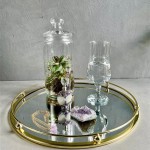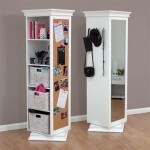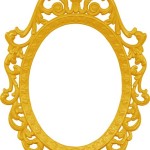How To Frame A Wall Mirror With Moulding
Framing a wall mirror with moulding elevates its aesthetic appeal and integrates it seamlessly into the room's decor. This process, while achievable for DIY enthusiasts, requires careful planning and execution for optimal results. This article provides a step-by-step guide to framing a wall mirror with moulding.
Planning and Preparation
Accurate measurements form the foundation of a successful framing project. Measure the mirror's length and width precisely. These measurements determine the amount of moulding required. Adding a few extra inches to each measurement provides a buffer for potential cutting errors.
Material selection significantly impacts the final look. Various moulding profiles are available, from simple to ornate. Consider the existing decor style when choosing a moulding profile. Common materials include wood, MDF (Medium-Density Fiberboard), and polyurethane. Each material offers different aesthetic qualities and levels of durability. Wood offers a classic look but requires more finishing work. MDF is a cost-effective and versatile option. Polyurethane is lightweight and resistant to moisture.
Gather the necessary tools. Essential tools include a miter saw, measuring tape, safety glasses, wood glue, finishing nails, a nail gun or hammer, and a caulk gun. A coping saw can be helpful for intricate joints. Having the right tools improves efficiency and precision.
Cutting the Moulding
Precise miter cuts are crucial for a professional-looking frame. A 45-degree angle on each end of the moulding pieces creates seamless corners. Mark the cutting lines on the moulding using a pencil and the measurements taken earlier. Double-check the measurements before cutting to avoid wastage.
Use the miter saw to cut the moulding pieces. Ensure the saw blade is sharp for clean cuts. Position the moulding securely against the fence of the miter saw to prevent movement during cutting. Adhere to safety precautions by wearing safety glasses and keeping hands clear of the blade.
Test the fit of the mitered corners. Hold the pieces together against the mirror to confirm they align perfectly. Minor adjustments might be necessary to achieve a tight fit. A coping saw can be used to refine the profile of one mitered end to fit perfectly against the adjacent piece, creating a tighter, more seamless joint, especially beneficial when working with intricate moulding profiles.
Assembling the Frame
Apply wood glue to the mitered ends of the moulding pieces. This reinforces the joint and ensures long-term stability. Press the pieces together firmly, forming the frame around the mirror.
Secure the frame with finishing nails. Use a nail gun or hammer to drive the nails through the moulding and into the mirror frame, if present, or directly into the mirror backing if it's sturdy enough. Space the nails evenly for optimal hold. Countersinking the nails creates a smoother surface for finishing.
Finishing the Frame
Caulk is essential for concealing any gaps or imperfections at the joints. Apply a thin bead of caulk along the inside and outside edges of the frame where it meets the mirror. This creates a seamless transition and enhances the frame's appearance. Smoothing the caulk with a damp finger provides a professional finish.
Once the caulk is dry, the frame can be painted or stained. The choice of finish depends on the desired aesthetic and the moulding material. If using wood, consider applying a primer before painting or staining for better adhesion and coverage. Multiple coats might be necessary to achieve the desired color depth and protection.
Mounting the Framed Mirror
The framed mirror can be mounted using appropriate hardware, depending on its size and weight. Heavy mirrors might require specialized mounting brackets. Ensure the wall can support the weight of the framed mirror. Follow the manufacturer's instructions when installing the mounting hardware.
Alternatively, if the original mirror already had mounting hardware and the new frame isn't too thick to interfere, the existing hardware might be usable. Carefully assess this before attempting to remount.
Important Considerations
Working in a well-ventilated area is essential when using paints, stains, or adhesives. Protective gear, such as safety glasses and gloves, should be worn throughout the process. Allow ample drying time between coats of paint or stain and before mounting the framed mirror.
For larger or heavier mirrors, it's recommended to have assistance during the framing and mounting process. This ensures safety and prevents damage to the mirror or the surrounding area. Careful planning and execution transform a simple mirror into a stylish focal point.

Diy Bathroom Mirror Frame With Molding The Happier Homemaker

Easy Diy Tutorial Adding Trim Around A Giant Mirror For Ers

The Kids Bathroom Mirror Gets Framed House Of Hepworths

How To Frame Out That Builder Basic Bathroom Mirror For 20 Or Less

Bathroom Mirror Framed With Crown Molding Large Mirrors Frame Makeover

How To Frame A Bathroom Mirror

Framing A Mirror Without Miter Cuts The Kim Six Fix

How To Frame A Mirror

Framing A Bathroom Mirror Tempting Thyme

The Kids Bathroom Mirror Gets Framed House Of Hepworths








